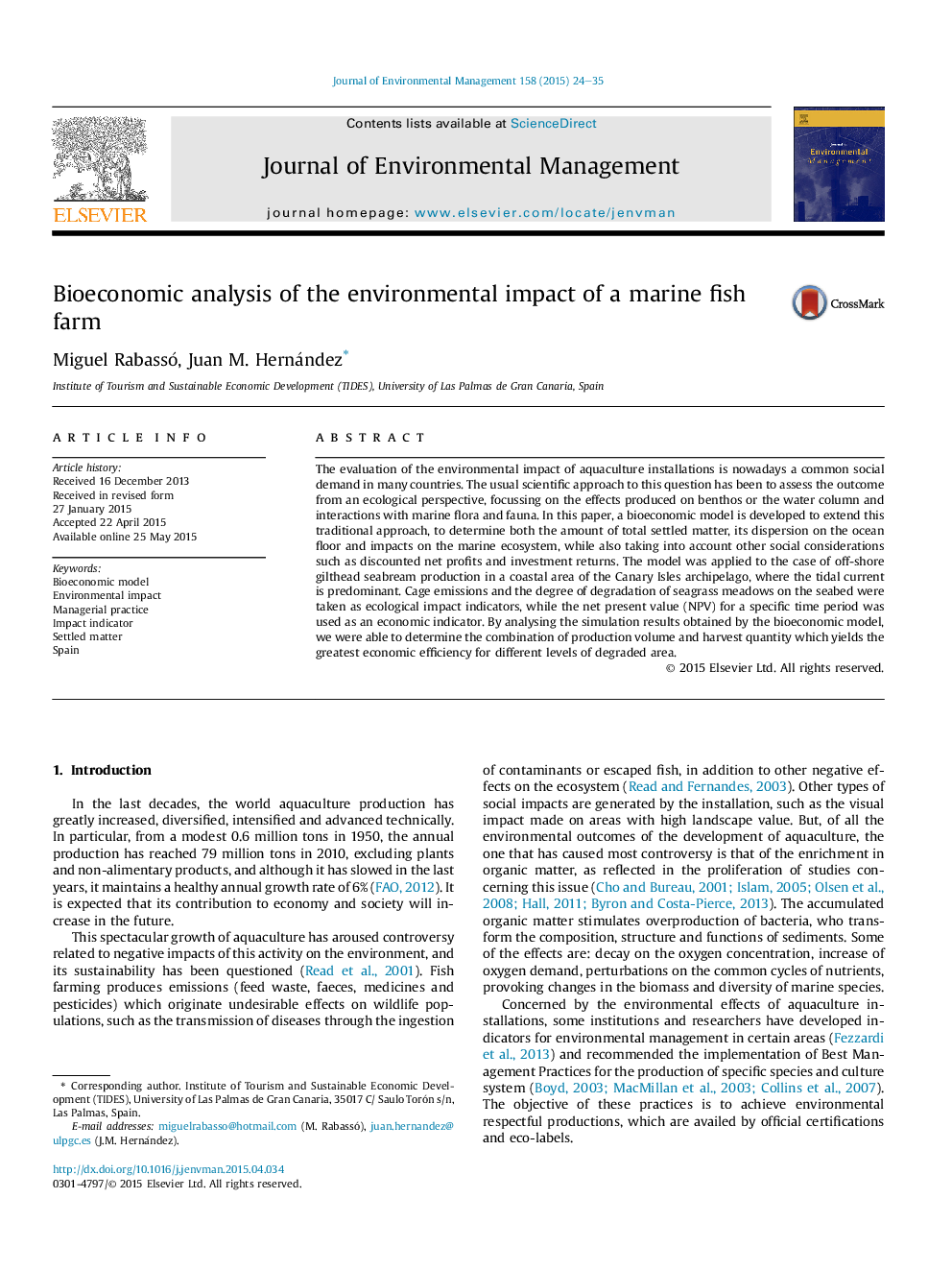| Article ID | Journal | Published Year | Pages | File Type |
|---|---|---|---|---|
| 1055575 | Journal of Environmental Management | 2015 | 12 Pages |
•A bioeconomic model is built to estimate the environmental impact of a fish farm.•The environmental and economic effects are examined jointly.•Ecological and economic results of different management strategies were compared.•The analysis determines the greatest economic efficiency of different levels of degraded area.
The evaluation of the environmental impact of aquaculture installations is nowadays a common social demand in many countries. The usual scientific approach to this question has been to assess the outcome from an ecological perspective, focussing on the effects produced on benthos or the water column and interactions with marine flora and fauna. In this paper, a bioeconomic model is developed to extend this traditional approach, to determine both the amount of total settled matter, its dispersion on the ocean floor and impacts on the marine ecosystem, while also taking into account other social considerations such as discounted net profits and investment returns. The model was applied to the case of off-shore gilthead seabream production in a coastal area of the Canary Isles archipelago, where the tidal current is predominant. Cage emissions and the degree of degradation of seagrass meadows on the seabed were taken as ecological impact indicators, while the net present value (NPV) for a specific time period was used as an economic indicator. By analysing the simulation results obtained by the bioeconomic model, we were able to determine the combination of production volume and harvest quantity which yields the greatest economic efficiency for different levels of degraded area.
